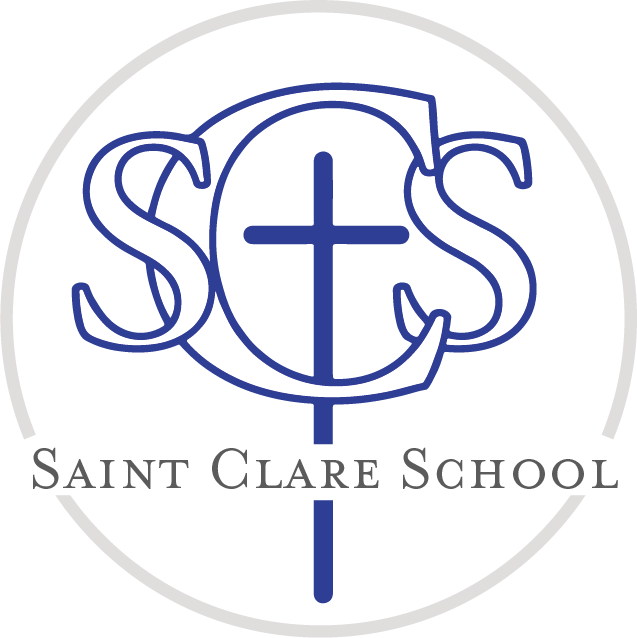Common Core State Standards
Written By Nancy Doyle
Former Assistant Superintendent of Education
Diocese of San Jose
The Common Core State Standards are a set of learning goals for all students in grades K-12. The public schools in California, and in 45 other states, are moving to implement these new standards. More than 100 Catholic dioceses across the nation have chosen to do so as well. In the Diocese of San Jose our elementary schools began to align their instruction to the California Common Core State Standards last year, and are now in full implementation in Kindergarten through eighth grade.
These new math and English language arts standards identify a progression of skills that students will master as they move through the grades. They replace the old individual states' standards and ensure that all students across the nation will have access to rigorous and relevant academics. The Common Core State Standards were designed with a focus on college and career readiness. They were written to ensure that American students have the opportunity to reach the same high levels of academic performance as those in the highest performing countries in the world.
It is important to note that the Common Core State Standards set benchmarks and guidelines for what students will learn, but they do not prescribe a particular curriculum or a particular set of teaching strategies. Teachers will continue to use their best professional expertise to design lessons to help their own students meet the standards. In our Catholic schools, teachers use a variety of materials and approaches, including traditional textbooks and literature, hands-on learning experiences, technology and digital media, and flexible grouping of students. The Common Core State Standards give us direction and focus.
There is also an exciting national effort, the Common Core Catholic Identity Initiative, which is developing resources and guidelines to help schools explicitly integrate Catholic identity into their standards-based instruction. A collaborative effort of the National Catholic Educational Association, Catholic universities, and others, this initiative is now building a collection of English language arts instructional units which incorporate both the new Common Core standards and Catholic identity - Scripture, values, beliefs, practices and teachings of the Church. These materials are freely available to all Catholic schools.
This work of the Common Core Catholic Identity Initiative is also aligned with a set of Catholic school effectiveness standards that were drafted by a national task force and reviewed by leaders at Catholic universities, Catholic school superintendents, Bishops, and pastors.
The final document, The National Standards and Benchmarks for Effective Catholic Elementary and Secondary Schools, was published by Loyola University Chicago last spring. It clearly describes how mission-driven, program effective, well managed, and responsibly governed Catholic schools operate. These standards and benchmarks are very useful for our schools as they continually self-assess and monitor their own school action plans.
Pope Benedict XVI, during his 2008 visit to the United States, stated "Catholic schools are an outstanding apostolate of hope...addressing the material, intellectual and spiritual needs of three million children." We are proud of our local Catholic schools. They are strong in both their academic rigor and their Catholic identity.
Religion is taught daily. Catholic identity is infused throughout the curriculum. For example, fifth graders studying the causes and consequences of the Civil War in Social Studies class will also examine that history in relation to the Fifth Commandment, the fourth Beatitude and Catholic social teachings regarding life and dignity of the human person.
Our schools have always had excellent instructional practices. Now, with the new Common Core State Standards, these become even stronger. Here are a few changes the new standards bring and some examples of how they actually affect the curriculum:
Fewer (but more rigorous) math standards: Standards at each grade level decrease in number, but there is an expectation of a much greater depth of learning. Kindergarten students focus on the concept of numbers and specific attention is given to the numbers from 11 to 20. Students explore, build and deconstruct those numbers so they can develop a firm foundation for understanding place value.
Mathematical practices: Math classes incorporate "practice standards" to help students apply math content in real life. These standards include persevering to solve problems, reasoning abstractly and quantitatively, attending to precision, and choosing and using appropriate tools to solve problems. In fourth grade, students solve real life problems that require metric conversions.
More difficult reading standards: Students are expected to read more difficult text sooner and to discuss what they have read at a more complex level. Reading assignments are more challenging and students must read them "like scholars," with attention to detail and the ability to understand and synthesize material they have read.
Focus on informational text: Students read less fiction and more informational and expository text. They write more across all subject areas. All teachers, including science and social studies teachers, help students become expert readers and writers.
Focus on practical application of learning: Since the standards were designed with the workplace in mind, students think and act more like real scientists, historians, etc. Students conduct experiments, read and analyze original historical documents, use math to solve practical problems, write persuasive essays on current topics, and work collaboratively with their peers.
Different kinds of assessments: Given the changes described above, simple true/false quizzes or multiple choice tests may no longer be sufficient to identify progress and help teachers appropriately plan the next lessons. Assessments require students to analyze and apply the information, to solve multi-step problems, and to demonstrate specifically how the knowledge can be used.
The Department of Education strives to provide leadership, service and support to our schools as they implement these rigorous standards and continually weave Catholic identity throughout the curriculum.
From an article published in two parts in The Valley Catholic, The Official Newspaper of the Diocese of San Jose, Volume 30, Numbers 14 & 15, published on November 6 & 20, 2012.
